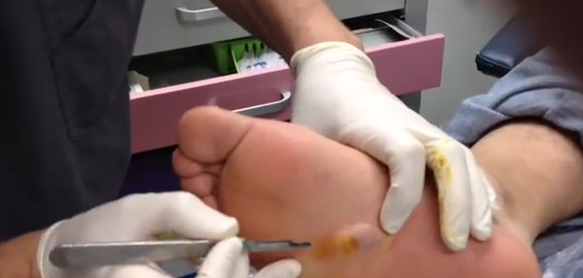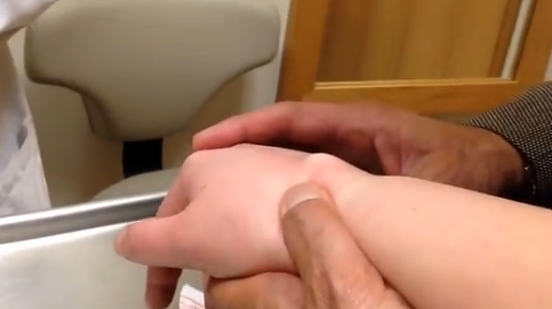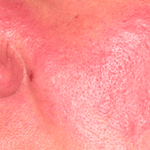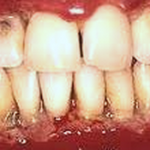A ganglion cyst is an abnormal fluid-filled bump that typically develops along the tendons of joints occurring on the hands or wrists. A ganglion cyst may also occasionally form on the feet.A ganglion cyst may develop rapidly, or may appear gradually over time. Doctors are not aware of the exact cause.
Most instances of a ganglion cyst are painless and often resolve on their own. Hence, it usually does not need medical treatment. In rare cases, a ganglion cyst may cause pain or limit the movements of joints. If this happens then patients need to seek medical attention.
A ganglion cyst can also be ugly to look at and hence patients may remove it for cosmetic reasons. Treatment includes draining of fluids from the anomalous lump, or surgical removal of the full cyst.
Symptoms of a ganglion cyst
A ganglion cyst may be accompanied by the below listed signs and symptoms:
- A ganglion cyst is rounded, solid, and smooth. They mostly contain fluids.
- Ganglion cysts can appear as abnormal elevated bumps along the joints or tendons of wrists or fingers. The most common type is the one which affects the wrist. Around 10-11 percent of the patients may suffer from formation of a ganglion cyst on the ankles or feet.
- Most instances of such abnormal raised bumps are painless. Sometimes, patients may experience pain, weakness, or numbness of the affected joints if the cyst exerts pressure on the adjoining nerves.
- Some affected individuals may not experience the formation of a visible fluid-filled lump. In such situations, the condition is diagnosed after studying the causes of pain felt by the patient, via varied procedures and tests like an MRI or an ultrasound.
- The amount of activity that a patient engages in contributes to the overall size of a ganglion cyst. A person with low usage of the wrists will develop a small cyst, while those with excessive usage may experience formation of a large ganglion cyst.
Causes
Research is still on to find out the causes of a ganglion cyst.
A ganglion cyst appears as a bulbous bump, hanging via a thin stalk, and growing along a joint. It typically forms because of protrusion or dislocation of the tissue present near a joint or a tendon. The cysts are full of fluids, similar to those occurring around tendons or in joints.
Some risk factors that increase the vulnerability to developing a ganglion cyst are as follows:
- Usual wear and tear of the joints may cause a type of arthritis called osteoarthritis, which in turn results in increased buildup of fluids inside the joints. These excess amounts of fluids seep into the capsules of tendons and get deposited into an existing lump.
- Women are more susceptible than men.
- Any injury of trauma to the tendons or joints of the feet or hands can increase the risk to development of abnormal bumps in the affected areas.
Treatment of a ganglion cyst
The different treatment options for a ganglion cyst are listed below:
- Immobilization:Ganglion cysts tend to become bigger with motion. Doctors therefore use a splint or a wrist brace to immobilize the affected areas. The wrist or hand can then stay at rest leading to reduced pressure on the nerves, reduction in the size of the cyst, and eventual alleviation of pain.
- Aspiration: It involves draining of fluids from a ganglion cyst. A local anesthetic is used to numb the affected region. Then, a needle fixed to a syringe is inserted into the bump and the fluids are removed into the syringe. A steroid injection at the spot is then given to prevent infections. This procedure comes with a higher chance of cyst re-growth.
Surgical removal of a ganglion cyst
If the other treatment options do not yield proper results, then doctors will go for surgery.
- The surgery can be carried out at a doctor’s office. The affected region is numbed with a local or regional anesthetic. The skin above the bump is then cut open with a surgical knife and the fluid is drained. The surgeon will then remove the cyst along with the stalk that holds it to the tendon or joint. Some section of the adjacent tissues may also be extracted for safety purposes. The area is then sutured and bandaged.
- After the surgical removal of a ganglion cyst, patients are required to keep the affected limb in a raised position for about 48 hours so as to decrease swelling. Tenderness, swelling, and discomfort will continue for about 2 to 6 weeks. Doctors may prescribe pain medications for pain relief. It is important to regularly change the bandages as per the instructions of your physician.Physical therapy can correct problems in efficient and regular movements of the affected joint, if any such problems arise post surgery.
- If a patient experiences continued swelling, redness, infections, or seepage from the surgical spot, then immediately consult your health care provider.
Ganglion cyst pictures




